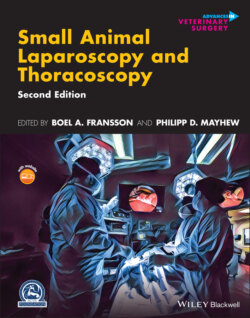Читать книгу Small Animal Laparoscopy and Thoracoscopy - Группа авторов - Страница 86
Considerations for a Minimally Invasive Theater or Suite
ОглавлениеWith the advent of minimally invasive, image‐guided laparoscopic procedures and other enhanced visualization and guidance systems, PACS and electronic medical records, the demands and needs for different qualities, types and intensities of light, as well as variations of brightness and focus in the different zones around the room have become primary functional and design challenges and concerns. Lighting systems today must provide flexibility in terms of intensity in the level and movement of light in the space, so that the system can adapt to the different requirements of open surgery, MIS, or image‐guided procedures. The need for different lighting in different zones within the OR to support the specialized functions during the procedure, and the complexity of the integrated OR control systems has added an additional level of complexity beyond what was seen even in the recent past.
The room must accommodate at least two equipment towers (endoscopy and anesthesia), and space must allow for their free movement to either end of the surgical table. Also, adequate clearance from the patient is required to avoid breaks in sterile technique. Ideally, two to three monitors are positioned either on booms, the equipment towers, or separate wheeled carts [55–58].
Figure 3.13 (A). State‐of‐the‐art integrated operating room with simultaneous multiimaging systems for veterinary image‐guided procedures – pictured ceiling rack mounted fluoroscopy and endoscopy systems. (B). The integrated OR single‐post control station near the border of the sterile area, which allows a single operator to coordinate, manipulate, manage, and access all information by a network and integration software displayed on one or multiple screens.
Source: Photo courtesy of Dr. Allyson Berent – AMC‐NY, USA.
